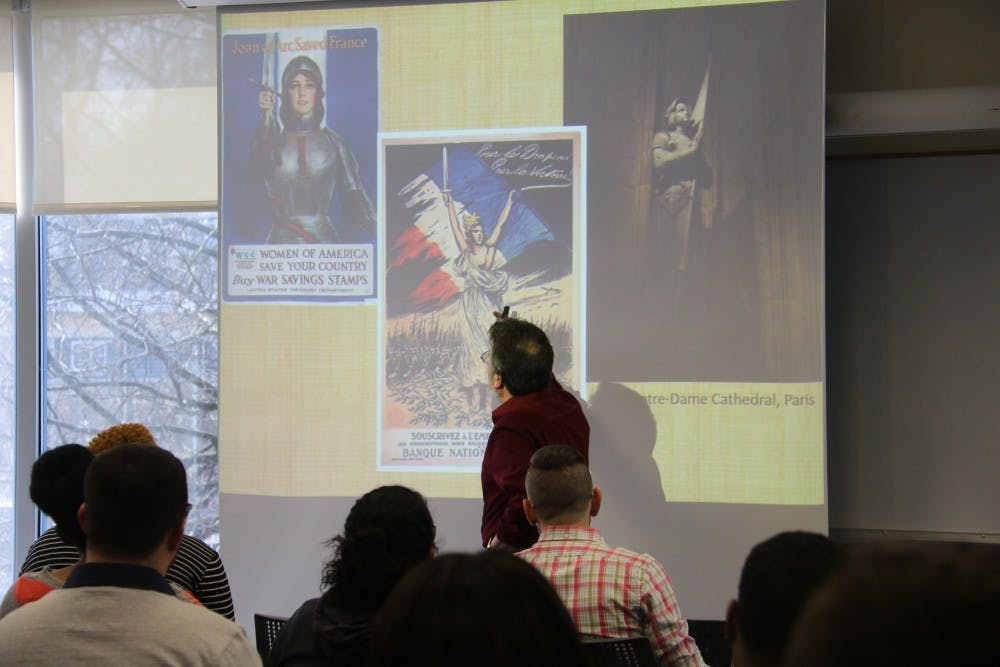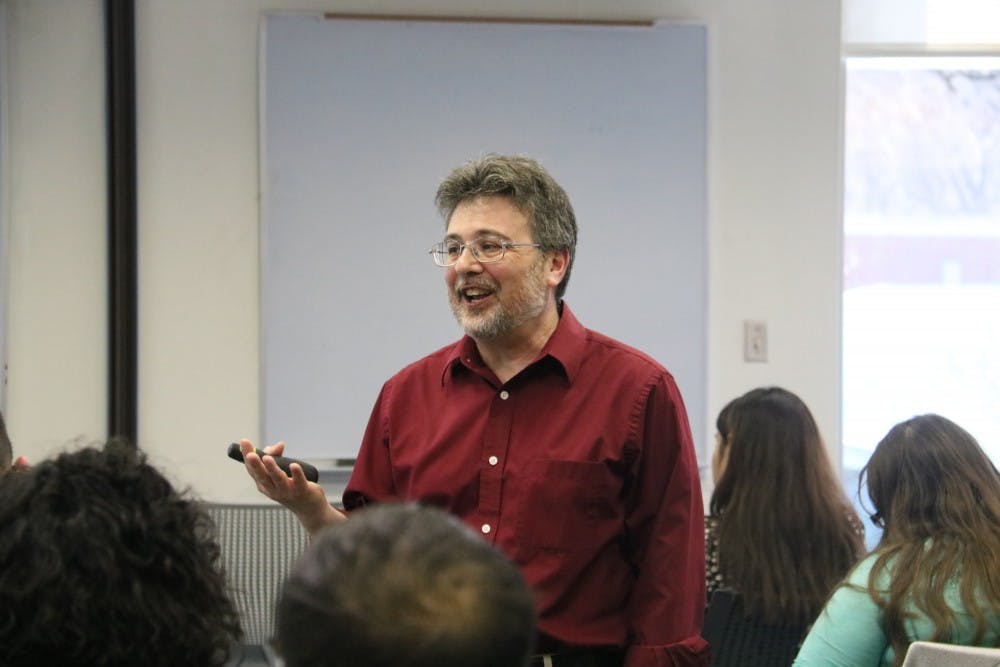Kean History Professor Christopher Bellitto, Ph.D., made a presentation on the life and impact of Joan of Arc. The lecture occurred Wednesday, March 20 at the Miron Student Center (MSC), Room 226 and was part of the Women's and Gender Studies Distinguished Lecture Series for Women's History Month.

The presentation began with Bellitto asking the audience what their preconceptions on Joan of Arc were. Some answers included warrior, martyr and leader. Bellitto proceeded to verify what assumptions about Joan of Arc were myth and those that were real history. Bellitto then transitioned into his lecture on the life and death of Joan of Arc.
Joan of Arc was born Jan. 6, 1412 as Jeanne d'Arc to a peasant family. At this time both the King of England and King of France believed they ruled both countries, causing much conflict even years before she was born. Joan of Arc's life's work occurred when France was trying to gain independence from England.
Joan of Arc was about 12 or 13 years old when she claimed to hear voices from God. People tried to silence her by reasoning that she was bipolar or schizophrenic among other charges. Typical of the misogynistic times, people insisted that her claims came from hallucinations from her menstruation.
Still, she insisted that she was given messages from the Archangels Gabriel and Michael and the Saints Margaret and Catherine (although it is unconfirmed which saint Joan of Arc was referring to). These messages told her to get into contact with Dauphin Charles VII who, according to the voices, was to be the rightful heir to France.
Joan of Arc thus set out to complete her divine mission and was able to make believers of men on her journey to Dauphin Charles VII. Joan of Arc's claim to hear divine voices was tested many times. She impressed men who began to believe in her credibility because she had knowledge and mannerisms outside of her education and background as a woman from a peasant family.
Eventually she was considered legitimate by enough men for Dauphin Charles VII to decide to meet with her. Dauphin Charles VII chose to test her as well by having his friend pretend to be him as he hid in the meeting room. Had Joan of Arc not been divinely inspired like she had claimed, she certainly would have failed this test as she would not have known what the Dauphin Charles VII looked like. To the dauphin's surprise she walked into the room and immediately called Dauphin Charles VII out of his hiding place. Dauphin Charles VII and Joan of Arc then had a private meeting where Dauphin Charles VII was convinced of her authority and God-given message. He decided to give Joan of Arc an army and anything else she needed to fulfill her mission. To this day, history does not know what had happened or had been said within that private meeting.
Joan of Arc then set out and helped France win against the English in the Battle of Orléans in 1429. This was a significant feat as no one else had been able to beat the English within the six months that the war had been occurring. This victory led to the coronation of Charles VII as King of France and the beginning of France becoming its own independent nation. Unfortunately, Joan of Arc was soon captured in 1430 by Burgundians, who were French allies of England.
The English put Joan of Arc on trial for witchcraft, heresy and for being "unnatural" which meant that Joan of Arc dressed and acted outside of the parameters for women at the time. The English wanted to disprove Joan of Arc that she had come from God in order to discredit King Charles VII's claim to the throne. She was likely tortured which lead to her confession. Days after her confession, however, Joan of Arc retracted it. The English decided to burn her at the stake.
Joan of Arc died a horrific death. Typically people executed by burning would have their throat slit or an arrow to the heart to kill them right before the body was burnt. However, Joan of Arc was not given this more humane treatment and was burned alive. To further illustrate their hate of Joan of Arc, they then proceeded to beat the bones to dust and threw the dust into the river. They had done this so that people would not be able to create a shrine to her. The English even went so far as to change the transcript of her trial to incriminate her, changing her dialogue about hearing messages from God to hearing messages from the devil.
After her death, Joan of Arc's mother, Isabelle Romée, fought to reopen Joan of Arc's case. Romée wrote to the Pope who listened and had the trial reopened. This new trial occurred in 1456 while witnesses of the original trial were still alive. In the new trial, the witnesses began to admit to lying and having been bribed or blackmailed by the English. The witnesses admitted their guilt and asked for Joan of Arc's forgiveness because they believed Joan of Arc was now in heaven. This new trial succeeded in clearing Joan of Arc's name. Joan of Arc eventually became canonized as a saint by the Catholic Church in 1920.

Bellitto then proceeded to talk about how the story and character of Joan of Arc became very popular and was a celebrated figure especially after Napoleon Bonaparte chose her to be his patron saint.
In her death, Joan of Arc has taken on new life, becoming a symbol for many things. Bellitto listed her patronage as extending to soldiers, France, prisoners of war, refugees, cross dressers and more.
Thus, Joan of Arc's story comes in three parts: her life, trial and posthumous impact. With the conclusion of Bellitto's lecture came an interesting open floor discussion that ended the event on a high note, as everyone came away knowing more about the iconic figure.







